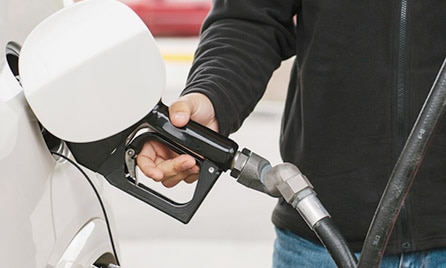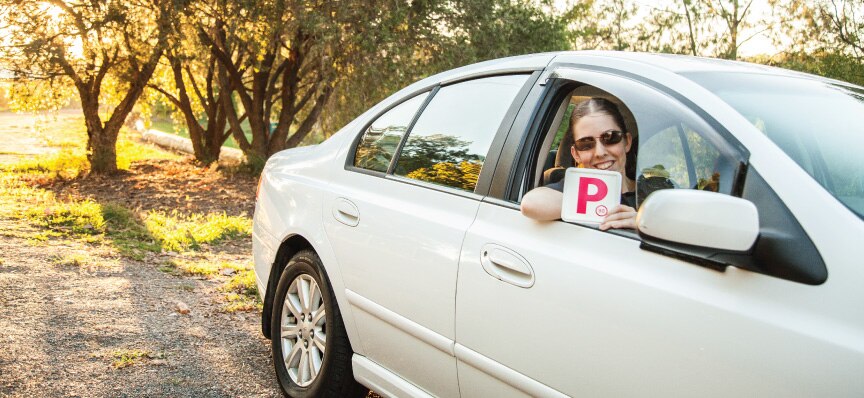- text
-
° This offer is only available for policyholders who have a registered Everyday Rewards Card linked to their eligible active Everyday Insurance policy. This offer is limited to one in-store Woolworths Supermarket transaction up to $500, with a maximum saving of $50 per Everyday Rewards Card, per month, regardless of the number of Woolworths services you use. For full T&Cs click here.
Choosing the right car insurance in Australia.
Car Insurance | 8 minute read | 15 July 2025

Understanding your car insurance needs.
Your car insurance needs can depend on your car, how you use it, and your financial circumstances, amongst other factors. Thinking about your specific circumstances is the first step to finding the right coverage. To help you clarify what's important, here are some questions you can ask yourself.
1. What level of cover do you need?
Are you looking to protect your own car from accidental loss or damage with a Comprehensive policy? Or are you primarily concerned with covering damage you might cause to other people's property, which a Third Party Property Damage policy could handle?
2. What is your car worth?
A higher car value could lead to a higher premium because it may cost more to repair or replace. You typically choose between agreed value (a fixed value you and the insurer agree on) or market value (the car's market value at the time of a claim). There are also other factors to consider such as your car's make, model, age, kilometres, and condition when determining its value, which in turn affects your coverage cost and potential payout.
3. How many kilometres do you expect to drive annually?
Some policies may offer a lower premium if you drive under a set number of kilometres annually. For example, Everyday Car Insurance customers may be eligible for Drive Less Pay Less cover if you drive 15,000km or less each year.*
4. Are there specific situations or items you need covered?
Think about optional benefits like hire car after theft or an accident or windscreen damage. Depending on your chosen level of cover, certain benefits may be included, while others are available as optional extras for an additional cost. Modifications and accessories need to be considered and notified to the insurer.
Types of car insurance in Australia.
Navigating the world of car insurance involves understanding the fundamental types of cover generally available in Australia. While specific offerings and limits can vary between insurers, here are some common types of car insurance you can typically encounter:
Compulsory Third Party (CTP ).
What's generally covered: this is the only mandatory type of car insurance in Australia. It covers compensation for people who are injured or killed in a road accident where your vehicle is at fault. It covers medical expenses, loss of income, and other related costs for those injured.
How it works: in most states and territories (QLD, VIC, SA, WA, TAS, NT, ACT), CTP is included in your vehicle registration fee. In New South Wales (NSW), it's known as a "Green Slip" and must be purchased separately before you can register your vehicle.
What's generally not covered it does not cover damage to your car or to other people's property (vehicles, fences, buildings, etc.).

Third Party Property Damage (TPPD) Insurance.
What's generally covered: it usually covers the cost of damage your car causes to other people's property (e.g., their car, fence, house) if you're at fault in an accident.
What's generally not covered: it generally does not cover any damage to your own car, regardless of who is at fault. It also doesn't generally cover personal injuries (that's what CTP is for). It's a basic and often more affordable type of optional car insurance..
Third Party Property, Fire & Theft (TPFT) Insurance.
What's generally covered: this type of policy usually includes everything covered by Third Party Property Damage, plus it can provide cover for loss or damage to your own car if it is stolen or damaged by fire or theft.
What's generally not covered: it generally doesn't cover accidental damage to your own car (unless it's fire or theft related) if you're at fault.
Comprehensive Car Insurance.
What's generally covered: this is usually the highest level of car insurance and offers the broadest protection. It could cover:
Damage to other people's property (like TPPD).
Loss or damage to your own car due to a wide range of events, including accidents, theft, fire, malicious damage, storms, hail, floods, and vandalism.
Key features: you may have the choice between agreed value and market value for your car's payout in the event of a total loss. Typically costs more but usually offers the most comprehensive coverage.
The above is a summary only. Always read the product disclosure statement for full terms, conditions, limits and exclusions that may apply.
Key car insurance terms explained.
Once you have an idea of the level of cover you need, it's essential to understand some core terms that make up your policy. Getting familiar with these will help you compare options and manage your insurance effectively.

Car valuation methods: agreed value vs. market value.
With Comprehensive cover, your car is typically insured up to either an agreed value or the market value.
Agreed value.
The agreed value is a specific amount that the insurer agrees to insure your car for. This amount is shown on your Certificate of Insurance and may change when you renew your policy. If your car is declared a total loss, the maximum amount the insurer would usually pay is based on this sum insured (which is the agreed value in this case), less any applicable excesses.
Market value.
The market value is the reasonable market-related value that the market would pay for your car immediately before its loss or damage. This value takes into account factors like your car's age, make, model, condition, and kilometres travelled, and considers relevant industry data.
Understanding your premium.
Your premium is the amount of money you agree to pay for your policy for a specific period, usually annually or monthly. When you apply for cover or renew it, the insurer will tell you the premium amount, which is confirmed in your Certificate of Insurance. The premium is calculated based on a number of criteria. Some of these factors can include:
Your details: age, driving history and where you live and park your car.
Your car's details: make, model, age, value (agreed or market), safety features, performance, and the cost/availability of parts for repairs.
Your chosen policy: the type of cover (e.g., Third Party Property Damage vs. Comprehensive), the excess amount you choose (a higher excess often means a lower premium), and any optional extras you add (like hire car cover).
How you use your car: whether it's for private use or business, and how many kilometres you drive per year.
External factors: broader trends in claims costs, inflation, and government charges (like GST and stamp duty) can also influence premiums.
Understanding types of excesses.
A car insurance excess is the out-of-pocket amount you agree to pay towards the cost of a claim. When you make a claim, the excess is deducted from the total payout, and the insurer covers the rest. It's essentially your contribution to the repair or replacement of your vehicle (or other property if you're at fault). All applicable excess amounts are shown in your Certificate of Insurance.
There are several types of excesses that can apply, sometimes in combination.
Note that below is a general list only, always read the Product Disclosure Statement of your policy for full list of excesses, as well as terms, conditions, limits and exclusions that apply.
| Excess type. | Definition. |
|---|---|
| Standard (or Basic) excess. | This is the default excess amount that applies to most claims. It's set when you take out your policy and is typically listed on your Certificate of Insurance. The amount can vary based on factors like your car type, where you live, and your claims history. |
| Age excess (under 25 driver excess). | This additional excess can apply if the driver of your car at the time of the incident is under a certain age, commonly under 25 years old. This is because younger drivers are statistically considered higher risk. This excess is usually added on top of any standard excesses. |
| Inexperienced driver excess. | Similar to an age excess, this can apply if the driver of your car is 25 or over but has held their driver's licence for less than a specified period (e.g., less than two years). This could also apply in addition to other excesses. |
| Unlisted driver excess. | If someone drives your car and causes an accident, and they aren't listed as a driver on your policy (even if they have a valid license), an additional unlisted driver excess might apply. It's always best to list anyone who regularly drives your car on your policy to avoid this. |
| Specific claim excesses. | In some policies, certain types of claims might have their own specific excess. For example, some insurers might have a separate, lower excess for windscreen or glass damage, or a specific excess for hail damage. |
When you might need to pay an excess.
You may need to pay an excess when you lodge a claim and the claim is accepted. If your car is repairable, you might pay the excess directly to the repairer or the insurer before repairs begin. If your car is a total loss (written off), the excess can be usually deducted from the final settlement amount.
When could an excess be waived?
If you're involved in an accident that is not your fault, and you can provide the full details (name, address, vehicle registration, etc) of the at-fault driver to your insurer, you may not have to pay any excess. The insurer might then seek to recover their costs (including your excess) from the at-fault driver's insurer. However, if an at-fault party cannot be identified (e.g., a hit-and-run), you might still need to pay any other applicable excesses.
Car insurance exclusions.
Car insurance policies have exclusions that specify situations or types of damage that are not covered. It's crucial to read your Product Disclosure Statement (PDS) from your insurer to understand the exact terms of your policy, as exclusions can vary between providers.
Here are some common car insurance exclusions you might find:
Driver & vehicle issues: driving without a valid license, under the influence of alcohol or drugs, with an unregistered or unroadworthy car, or if an excluded/unlisted driver is at fault. Also, unapproved vehicle modifications or overloading could void cover.
Usage & intentional acts: deliberately causing damage, using your car for commercial purposes (like ridesharing) without specific cover, racing, or if an accident occurs while breaking the law (e.g., speeding). Leaving the scene of an accident or driving against medical advice could also be excluded, as might be using the wrong fuel type.
Other exclusions: normal wear and tear, mechanical breakdowns, pre-existing damage, unauthorised repairs, acts of war/terrorism, pest damage, or indirect losses (consequential loss).
Keeping your car insurance policy up-to-date.
It's vital to keep your car insurance policy up-to-date, not just to ensure you're fully covered, but also to avoid potential claim denials and optimise your premiums.
Life changes, like moving house, buying a new car, modifying your vehicle, adding or removing drivers, or even changing how you use your car. This could all impact your policy.
Staying proactive ensures your policy reflects your current situation and might help prevent unexpected issues when you need to make a claim.
What Car Insurance Policies does Everyday Insurance Offer?
Everyday Car Insurance offers a range of options for you and your car.
Other articles you might like.
Protect your car and get 10% off an in-store Woolworths shop every month.°
Note that information in this article is correct as of July 2025 and subject to change. For the most up to date information, please check the Product Disclosure Statement.
- text
-
* Savings between $0 to $320 derived from premium comparisons between Everyday Comprehensive car cover option and Drive Less Pay Less option. Calculations based on profiles of existing Everyday Car Insurance customers who drive 15,000km or less annually. Current as at 06 March 2024. Eligibility for Drive Less Pay Less and actual savings is determined by your individual circumstances, including the kilometres selected and other risk factors and underwriting criteria. Minimum premiums may reduce savings. Kilometres can be increased to a limit of 15,000km per period of insurance for an additional premium. In the event of a claim, if the end odometer reading is exceeded, an additional Outside odometer excess will apply.
- text
-
Cover and benefits are subject to eligibility criteria and terms and conditions, including the limits and exclusions of the insurance policy. Any advice provided is general only and may not be right for you. Before you purchase this product you should carefully read the Car Insurance Product Disclosure Statement and consider the Target Market Determination to decide if it is right for you.







